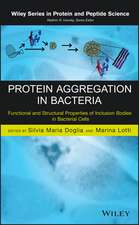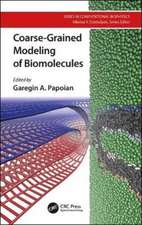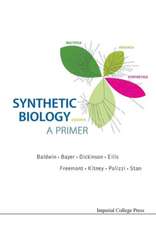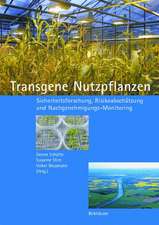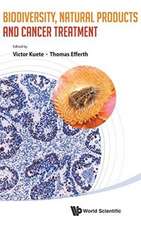Biomolecular Electronics: An Introduction via Photosensitive Proteins: Bioengineering of Materials
Autor Nikolai Vsevolodoven Limba Engleză Paperback – 26 sep 2011
Preț: 640.55 lei
Preț vechi: 753.60 lei
-15% Nou
Puncte Express: 961
Preț estimativ în valută:
122.56€ • 127.98$ • 101.21£
122.56€ • 127.98$ • 101.21£
Carte tipărită la comandă
Livrare economică 15-29 aprilie
Preluare comenzi: 021 569.72.76
Specificații
ISBN-13: 9781461275381
ISBN-10: 1461275385
Pagini: 300
Ilustrații: 296 p.
Dimensiuni: 155 x 235 x 16 mm
Greutate: 0.42 kg
Ediția:1998
Editura: Birkhäuser Boston
Colecția Birkhäuser
Seria Bioengineering of Materials
Locul publicării:Boston, MA, United States
ISBN-10: 1461275385
Pagini: 300
Ilustrații: 296 p.
Dimensiuni: 155 x 235 x 16 mm
Greutate: 0.42 kg
Ediția:1998
Editura: Birkhäuser Boston
Colecția Birkhäuser
Seria Bioengineering of Materials
Locul publicării:Boston, MA, United States
Public țintă
ResearchCuprins
1. Introduction.- A. Biophotonic Processes.- B. Bioelectric Phenomena.- C. Molecular Electronics.- D. Biomolecular Electronics.- E. Biomolecular Computing: An Overview of What Needs to Be Done.- 2. The Distinguished Family of Rhodopsins..- A. Visual Rhodopsin (VR) in Vertebrates.- B. Rhodopsins in Invertebrates and Microorganisms.- C. Bacterial Rhodopsin Isolated from Halobacteria.- D. Modification of Rhodopsins.- 3. The Unique Properties of Bacteriorhodopdins (BR) as Energy Converters.- A. Wild-type Bacteriorhodopsin (BR).- B. BR Variants.- C. BR Analogs.- D. BR Monolayers and BR Films.- E. Halorhodopsin Acting as a Chloride Ion Pump.- F. The Discovery of Sensory Rhodopsins (SR).- G. Phototaxis of Phoborhodopsins.- H. Yellow Protein Isolated from a Halophile.- I. A Summary of Properties of BR and BR Variants.- J. From Electronics to Bioelectronics.- 4. Photosensitive Materials for Use as Optical Memory.- A. Photographic Films.- B. Photochromic Materials.- C. Construction of Layered Purple Membranes.- D. Biochrome: A BR-based Photochromic Film.- E. BR Analogs for New Photochromic Films.- F. More Photosensitive Materials.- 5. BR as Optolectronic Materials.- A. Molecular Computing Elements.- B. Ultrafast Electro-optical Detectors.- C. Biosensors.- D. Photosensitive Hybrids of Purple Membrane with Mitochondria and Nonphotosynthetic Bacteria.- E. Position-sensitive Detectors.- F. Photovoltaic Devices.- G. 3-D memory in BR.- 6. Applications of Biochrome and Similar Films.- A. Optical Memory.- B. Can Bacteriorhodopsin-based Compact Disks Exist?.- C. The Generation of the Second Harmonic of Laser Radiation.- D. Increasing the Contrast of a Photostat copy.- E. Polarization Holography.- F. Real Time Holography.- G. Holographic Connections for Optical Communication.- H. Biomedical Applications.- I. Military Use.- J. Light Testers.- K. From Toys to Computers.- 7. Conclusion.- A. Proteins in Bioelectronics.- B. The Truth and Science Fiction of Biocomputers.- 8. References.- 9. Glossary and abbreviations.- 10. Appendix.




